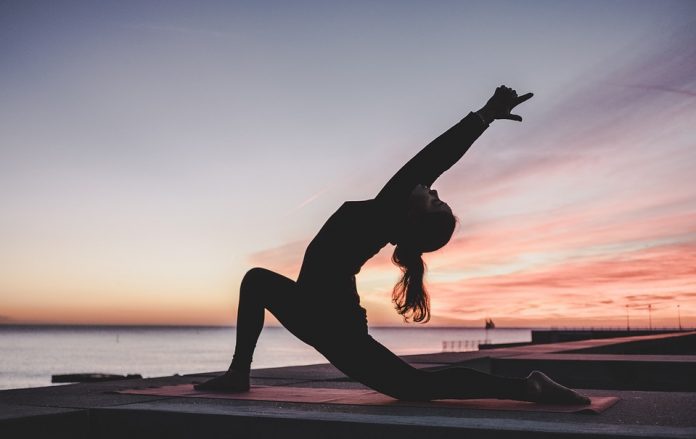The Power of Flexibility: Why Stretching Before and After Workouts is Crucial for Optimal Fitness
When it comes to achieving optimal fitness, many of us focus on the intensity and duration of our workouts, neglecting a crucial aspect that can make all the difference: flexibility. Stretching before and after workouts is an often-overlooked yet vital component of a well-rounded fitness routine. In this article, we’ll delve into the importance of flexibility, the benefits of stretching, and provide tips on how to incorporate it into your daily routine.
Why Flexibility Matters
Flexibility refers to the range of motion of a joint or a group of joints. It’s the ability to move your body freely and comfortably, without restriction or stiffness. Flexibility is not just important for athletes or individuals who engage in high-intensity activities; it’s essential for everyone, regardless of age or fitness level. Here are a few reasons why flexibility matters:
- Injury Prevention: Tight muscles and joints are more prone to injury. By increasing flexibility, you reduce the risk of strains, pulls, and tears. When your muscles and joints are flexible, they’re better equipped to absorb shock and stress, reducing the likelihood of injury.
- Improved Performance: Flexibility enhances athletic performance by allowing for more efficient movement patterns. When your muscles and joints are flexible, you can generate more power, speed, and agility.
- Reduced Muscle Soreness: Stretching after a workout can help reduce muscle soreness, also known as delayed onset muscle soreness (DOMS). This is especially important for individuals who engage in high-intensity or unfamiliar exercises.
The Benefits of Stretching
Stretching has numerous benefits that can improve overall fitness and well-being. Here are a few of the most significant advantages:
- Reduces Muscle Tension: Stretching helps to relax tense muscles, reducing muscle fatigue and improving overall muscle function.
- Improves Circulation: Stretching increases blood flow to the muscles, which can help to reduce inflammation and promote healing.
- Enhances Range of Motion: Stretching increases flexibility, allowing for greater range of motion and improved mobility.
- Reduces Stress: Stretching can help to reduce stress and anxiety by releasing tension in the muscles and promoting relaxation.
Stretching Before Workouts
Stretching before a workout is crucial for several reasons:
- Prevents Injury: Stretching before a workout can help to prevent injuries by increasing flexibility and reducing muscle tension.
- Improves Performance: Stretching before a workout can improve performance by increasing power, speed, and agility.
- Reduces Muscle Soreness: Stretching before a workout can help to reduce muscle soreness by increasing blood flow and reducing muscle tension.
Stretching After Workouts
Stretching after a workout is just as important as stretching before:
- Reduces Muscle Soreness: Stretching after a workout can help to reduce muscle soreness by increasing blood flow and reducing muscle tension.
- Promotes Recovery: Stretching after a workout can help to promote recovery by reducing inflammation and promoting healing.
- Improves Flexibility: Stretching after a workout can help to improve flexibility by increasing range of motion and reducing muscle stiffness.
Tips for Incorporating Stretching into Your Routine
Incorporating stretching into your daily routine can be easy and convenient. Here are a few tips to get you started:
- Make it a Habit: Make stretching a habit by incorporating it into your daily routine, such as right after waking up or before bed.
- Start Slow: Start with gentle stretches and gradually increase intensity and duration as you become more comfortable.
- Focus on Major Muscle Groups: Focus on stretching major muscle groups, such as hamstrings, quadriceps, chest, back, and shoulders.
- Hold Stretches for 15-30 Seconds: Hold each stretch for 15-30 seconds to allow for maximum relaxation and flexibility.
- Breathe Naturally: Breathe naturally while stretching, avoiding holding your breath.
Conclusion
Incorporating stretching into your fitness routine is crucial for optimal flexibility, performance, and overall well-being. By stretching before and after workouts, you can reduce the risk of injury, improve performance, and promote recovery. Remember to make stretching a habit, start slow, focus on major muscle groups, hold stretches for 15-30 seconds, and breathe naturally. With consistent practice, you’ll be flexing your way to fitness in no time!
FAQs
Q: How often should I stretch?
A: Aim to stretch at least 2-3 times per week, with a minimum of 10-15 minutes per session.
Q: What are some common stretching mistakes?
A: Common stretching mistakes include bouncing or jerking while stretching, holding stretches for too long, and neglecting to stretch major muscle groups.
Q: Can I stretch with weights or resistance bands?
A: Yes, you can stretch with weights or resistance bands to increase the intensity and challenge of your stretches.
Q: How long does it take to see results from stretching?
A: With consistent practice, you can start to see results from stretching within 2-4 weeks, including increased flexibility and reduced muscle soreness.
Q: Can I stretch if I have a pre-existing injury or condition?
A: Consult with a healthcare professional or fitness expert before starting a stretching routine, especially if you have a pre-existing injury or condition. They can help you modify your stretches to accommodate your specific needs.
flex-your-way-to-fitness-the-importance-of-stretching-before-and-after-workouts


